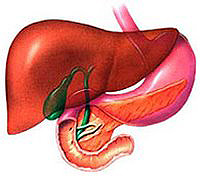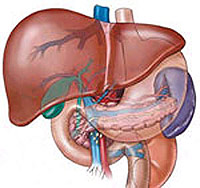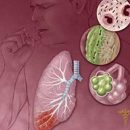What is dangerous hepatitis A? Who enters the risk group? How the virus is transmitted? About this More in the article.
Content
What is dangerous hepatitis A?
Hepatitis A – Serious liver disease. When a virus gets into the human body, the disease is developing in 95% of cases. Contrary to popular belief, the virus is really dangerous. And if the disease was not discovered immediately, it can lead to severe consequences. The disease is particularly hard in adults, but also in young children can lead to a sad result. So, in the USA in 2001 from hepatitis A died 1 of 200 patients under the age of 5. His main feature – High contagious. Annually hepatitis A face about one and a half million people in the world.
Who enters the risk group?
Most often hepatitis A sick children of preschool and younger school age. This is due to the fact that they are much time to be among the peers: in kindergarten, on the site, at school. And if one child falls, the likelihood of infection of others is very high. The September peak of morbidity is associated with this. Often hepatitis A «Bridge» from hot countries. The disease is not manifested immediately, and the baby infected with the virus after the rest is sent to school or kindergarten.
How to recognize the beginning of the disease?
Signs of hepatitis develop for about three weeks. It is especially close attention to pay the following symptoms:
 Weakness and increased fatigue
Weakness and increased fatigue- muscle pain
- headaches
- abdominal pain
- absence or reduction of appetite
- nausea
- Chair of light color
- Dark-colored urine
If you notice these signs or your child, immediately go to the doctor. Please note: not always hepatitis A is accompanied by the yellowing of the skin and the scler.
How the virus is transmitted?
Hepatitis A virus – Pretty strong virus that can survive for a long time in a variety of conditions. Most often it is transmitted when contacting a contaminated person. Also great risk of getting sick, using infected products in a restaurant or on the street. By the way, the virus can be maintained even in frozen products.
This virus is often called «Dirty hand disease». Indeed, neglecting the rules of hygiene – For example, forgetting to wash your hands after visiting the toilet, – You risk your health. The virus can be transmitted and through contact with various surfaces. So, the child can get infected by playing with a dirty toy.
Unfortunately, it is almost impossible to calculate all the options. According to statistics, approximately half of the sickness do not know where they could get infected.
How to protect yourself from the disease?
The most reliable way to prevent vaccination remains. It consists of two vaccinations that are taken with a break in 6–18 months. One of the most effective vaccines doctors today is the American drug «Vakta». He passed large-scale clinical trials, fully proven its effectiveness and safety. In addition, more than 16 million doses of this vaccine have already been applied in the world.
This vaccine can be introduced even to children from two years. Already 10 days after the first injection, no less than 99% of vaccinated immunity develops to the virus. Vaccination can be obtained in vaccination centers, in a children's clinic (for a pediatrician recipe) or within the vaccination organized in some schools.
And of course, hygiene rules should be clearly followed to protect against illness. All fruits and vegetables need to be carefully soaked. If you are in the country where hepatitis is common, drink only bottled water and do not buy food from hand. It is also useful to have a disinfecting solution for hand processing.









